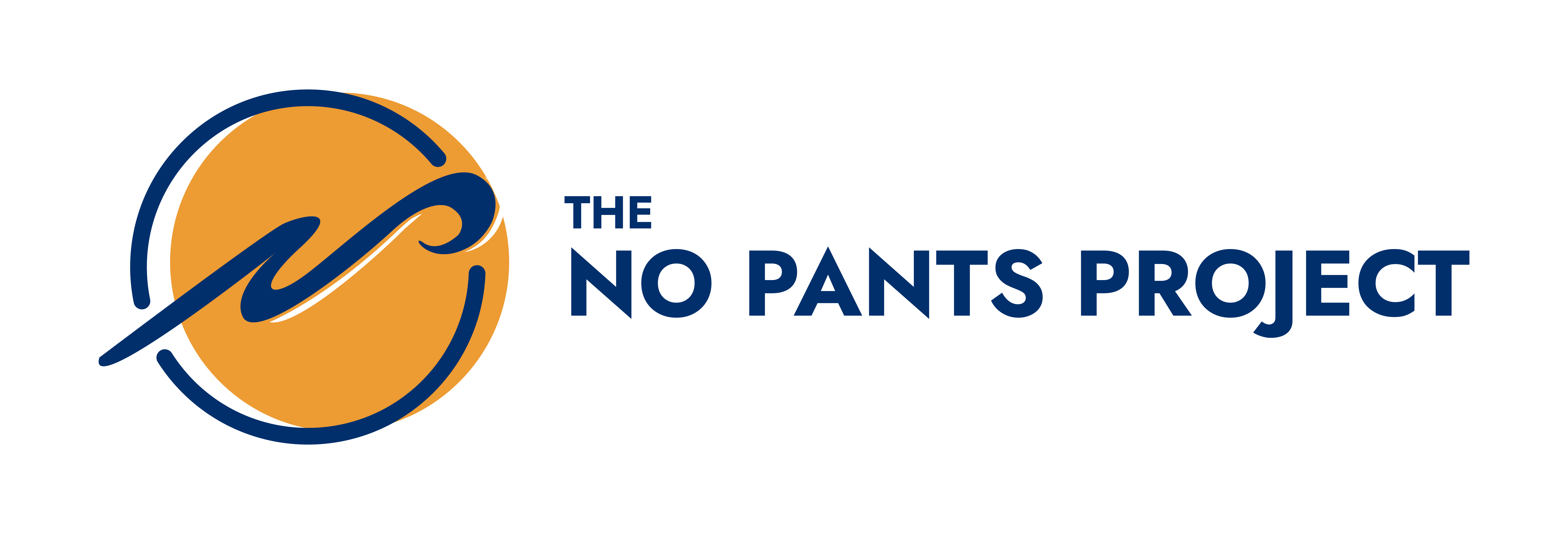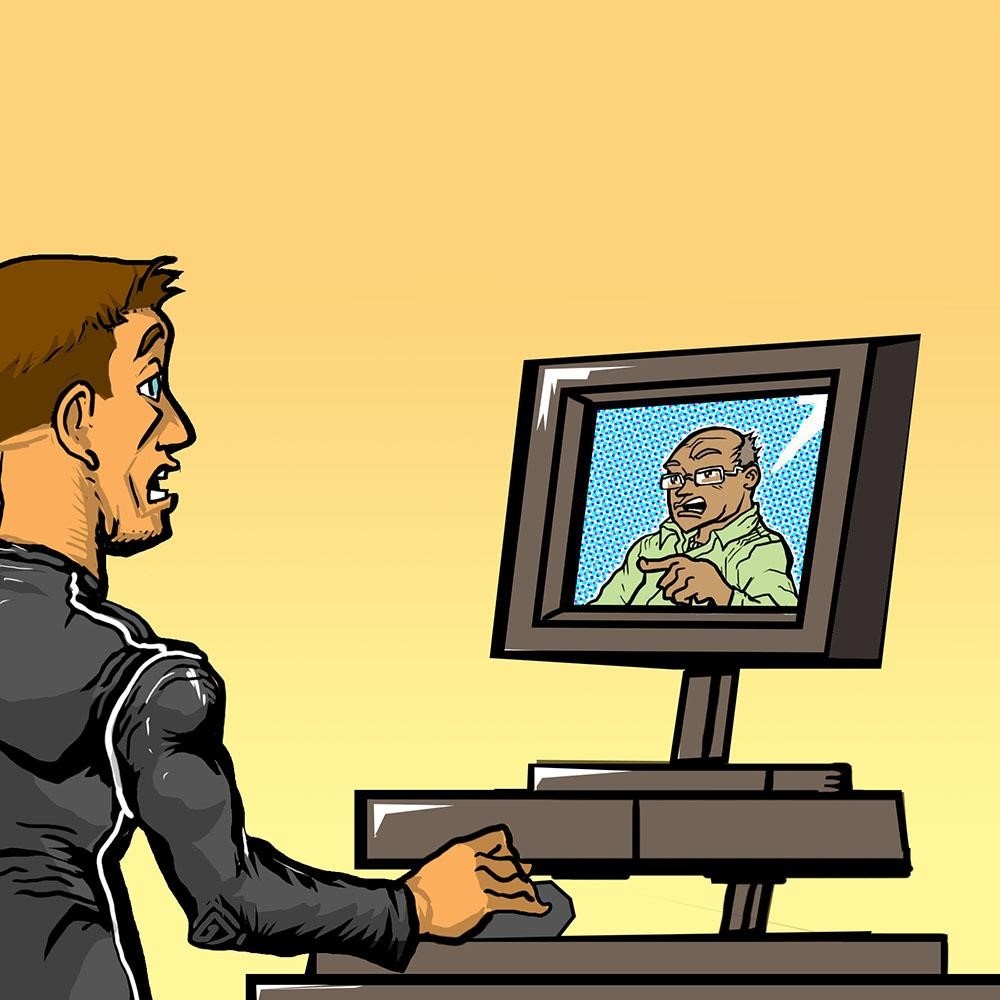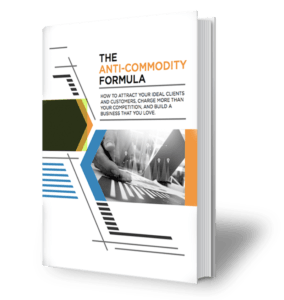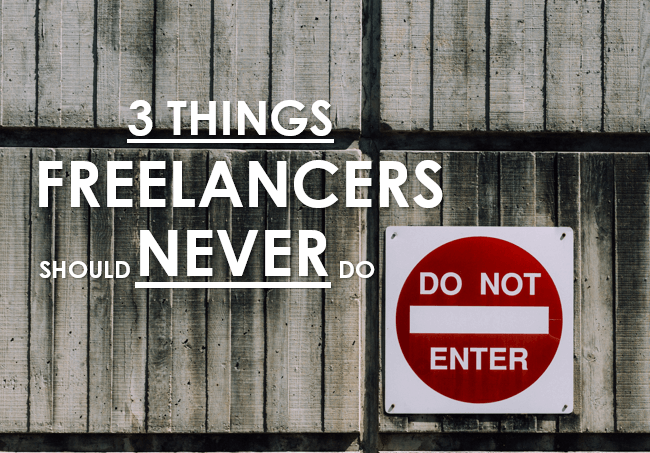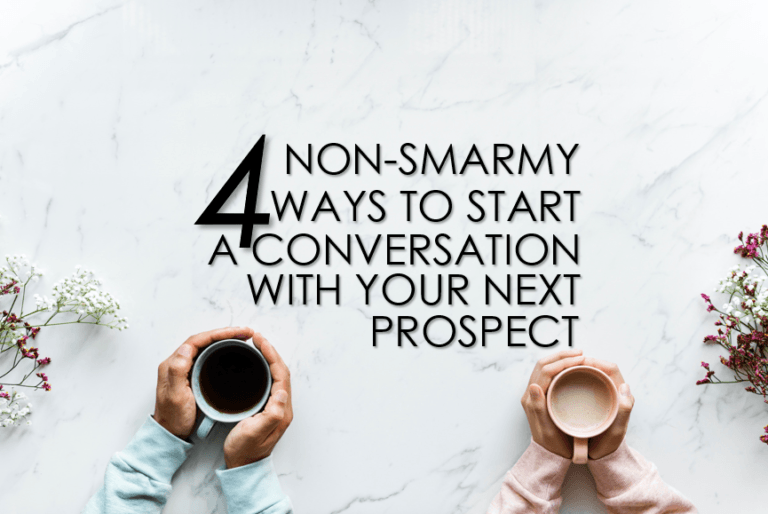You feel passionately about the product/service you’re offering.
You believe it can help the people in your chosen niche.
You’re offering a service that is high demand… You’re sure of it!
You’ve built an incredible website!
And yet, the prospects you’re trying to serve aren’t buying.
You just need to be better at sweet talking clients into buying, right?
Maybe you should master the art of shaming clients into doing what you want.
After all, if the client doesn’t want to buy your product, it’s all their fault, right?
Being a super pushy sales dog is the answer, right?
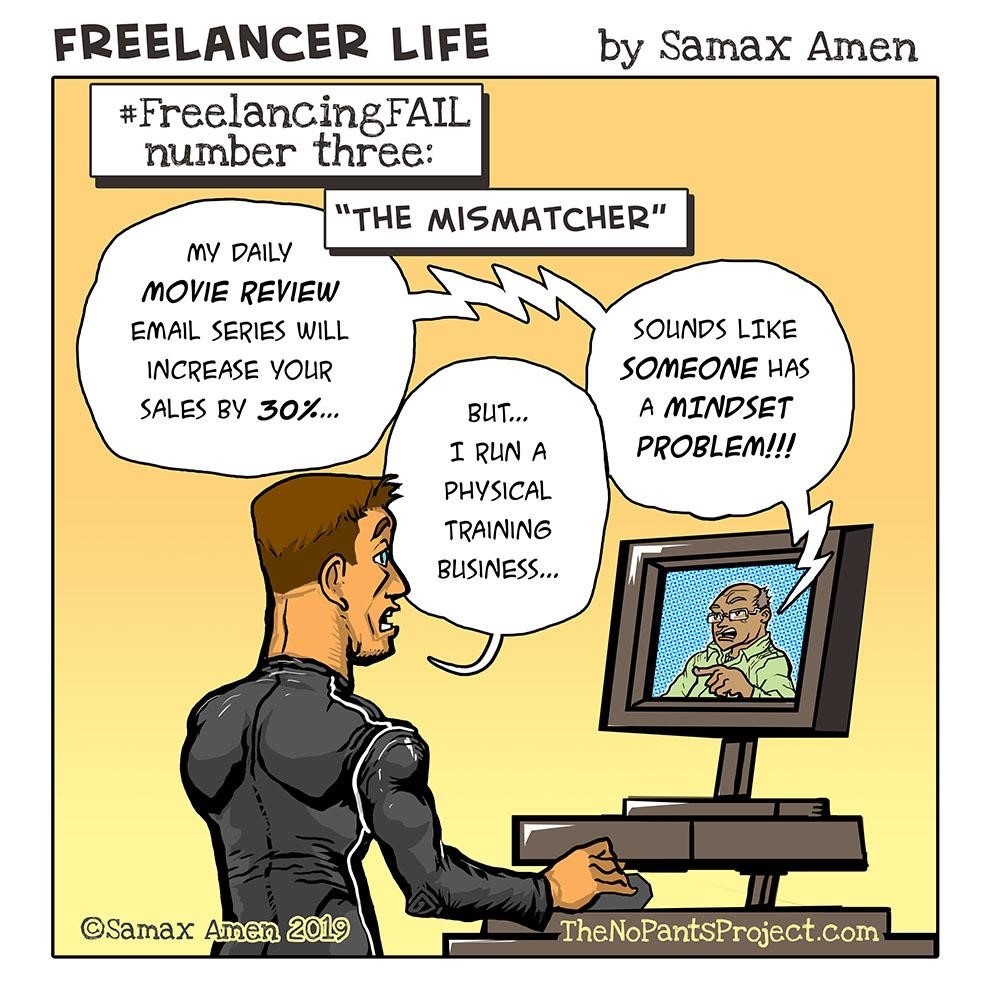
Wrong.
This is a good time to check your ego. To paraphrase Seth Godin, “I don’t like your offer’’ doesn’t mean I don’t like you. So you can sheath your claws.
Instead of defending yourself, make some small tweaks that could benefit you greatly.
You might want to consider that your offer doesn’t meet a need the prospect is aware of.
But that doesn’t mean give up on what you’re doing. You may just need a better understanding of how to match your offering to your ideal client’s needs.
If you’re having trouble getting people to pay for what you’re offering, your problem is most likely going to be in one of three categories.
Here’s a great framework to figure out what the problem is and some strategies for making changes to your offer that will make it desirable to your chosen niche.
Use the 40-40-20 Rule!
In the sixties, former State Department consultant, author, and “Father of Direct Marketing Education” Edward N. Mayer developed the foundational marketing concept that there are three elements (Audience, Offer, and Creative) that determine the success of any marketing campaign.
This is encapsulated in what Mayer dubbed the 40-40-20 Rule:
40% Audience
The specific group of people you deliver your message to accounts for a whopping 40% of the success of your efforts. Understanding who the audience for a message is helps you know what they want, and what you have to offer them.
Ideally, you should choose an audience that has a problem that you are able to solve. Your messages need to match the stories they are already telling themselves about the problem.
For each member of your audience you come in contact with, you want to quickly determine their level of awareness of the problem. This will determine how you should interact with them.
Gene Schwartz’s groundbreaking book Breakthrough Advertising categorizes each prospect into 5 Levels of Awareness:
1. Most Aware (Raving Fans): Knows your service can help them, and just needs to know their options and best way to buy. Don’t be shy. Give these prospects a reason to buy. Be direct with them, and keep in contact with them, whether they buy or not. Encourage them to share your content and ask them for referrals.
2. Product Aware (Window Shoppers): This prospect knows what you sell, but isn’t sure if your product or service is right for them. They are actively looking for someone to help them solve their problem. Build relationships with window shoppers, because they are ultimately going to buy from someone they like and trust.
3. Solution Aware (Advice Seekers): This prospect knows the result they want, but doesn’t know your product or service can provide that result. If you can demonstrate that you have knowledge and are trustworthy, these are very valuable prospects. Focus on building rapport, sharing your values, and educating them on your products and services.
4. Problem Aware (Sick Patients): This prospect knows they have a problem, but don’t know what the solution is or where to get it. They don’t know you or trust you. They are looking for information that can help them relieve their pain. Providing value to them is worth the effort because they can become Raving Fans if your content helps them.
5. Unaware (Lost Tourists): This prospect is pretty clueless. They may have heard of the problem, or have an opinion, but not much else. There is almost no point in targeting them.
Another issue with your Audience may be the size of the audience you’re delivering your messages to.
You don’t necessarily need a large audience if you’re targeting the right people, but if you want to grow your audience, there are plenty of free methods and paid methods to do it.
In his blog post “Client Getting Faucet Method for Getting Freelance Clients On Demand,” Mike Shreeve recommends 3 traffic sources (one paid, and two free).
40% Offer
The substance of what you are offering to your prospects accounts for another 40% of your success. More specifically, how the Offer matches and appeals to the Audience.
The cartoon above parodies the Audience-Offer mismatch that happens when your solution solves a problem your prospects don’t have, are not aware of, or don’t care about.
To avoid this, make sure you are tailoring your offer to the prospect’s level of awareness.
In some cases, the problem is that the way you’re positioning yourself is not attractive enough.
If your offer speaks to what you do, but not to how the customer benefits from what you do, the prospect probably won’t care about learning more.
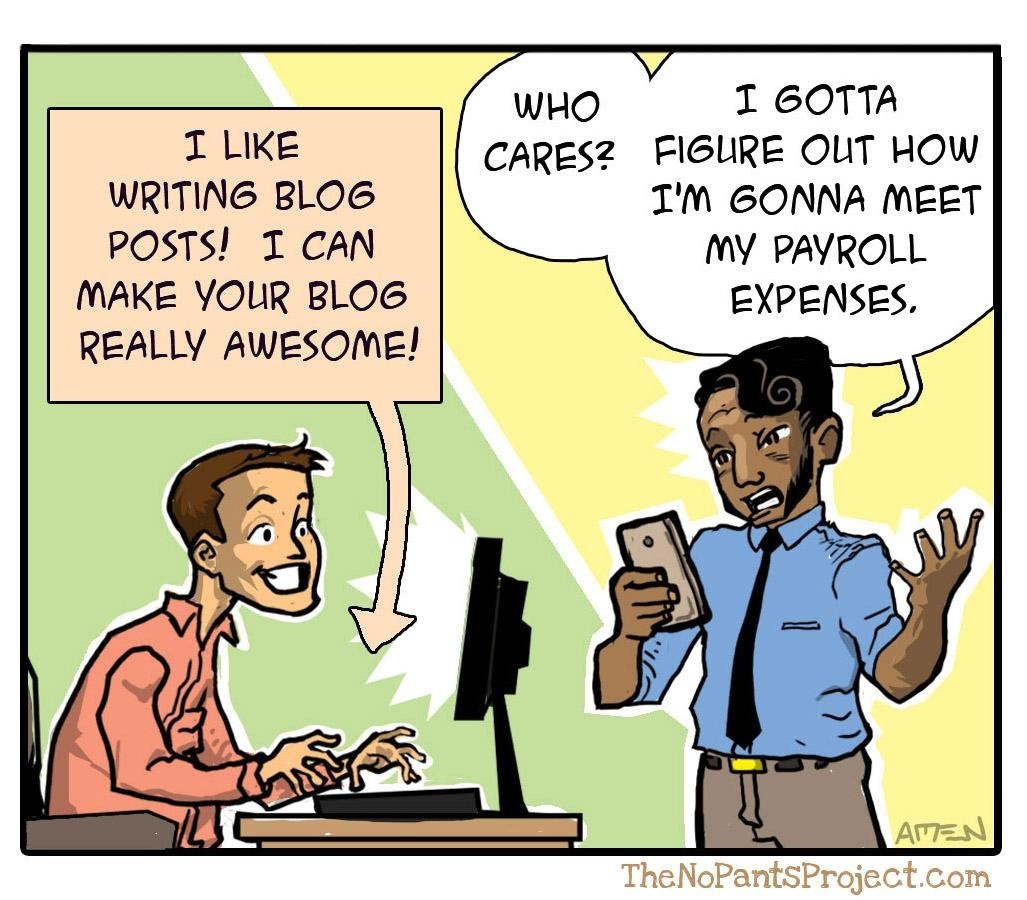
Learning how to empathize with your client goes a long way to solving this.
Mike Shreeve talks about how you can turn your ordinary easy-to-ignore offer into an Obscene Offer, that is nearly impossible for prospects to resist.
OBSCENE OFFER FORMULA
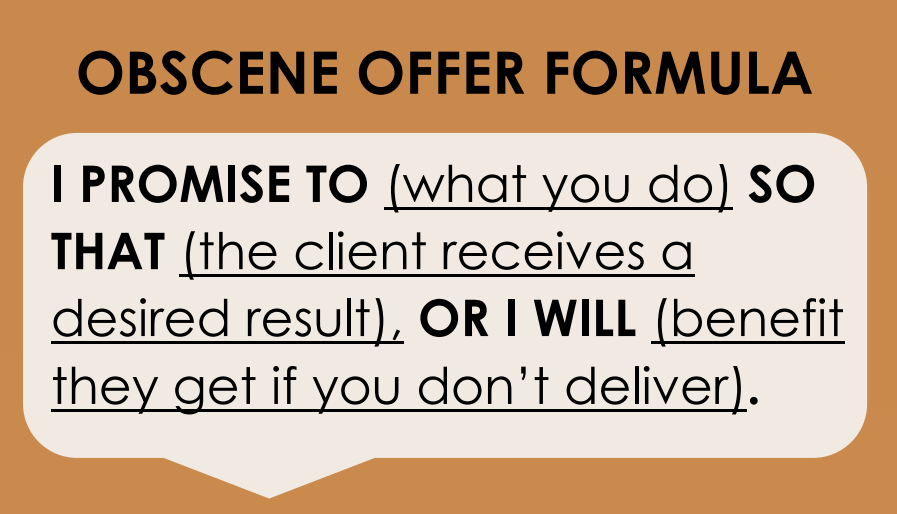
Example:
“I Promise to implement a Referral and Repeat business follow up email campaign that helps you increase your revenue by 15% in one month, or I will give you another month for free to get you to the 15% increase.”
I actually made this promise to a prospect, and he jumped at it.
It was easy to promise him that result because he had lots of good clients who were happy with his work, and he wasn’t doing ANY follow up.
Experience taught me that email follow up with happy clients gets good results.
So I KNEW I could promise the result with confidence in our ability to work together to get him that result.
Keys that make the Obscene Offer work:
- A PROMISE IS A PROMISE: Only Promise what you are 100% SURE you can deliver. No Excuses! Because if you can’t do it, you’ll have to pay the price of not delivering.
- The Power of NO: It can be hard to turn down money, but say NO to Clients who will not do their part for your offer to succeed. Your OBSCENE OFFER will attract a lot of wanna-be clients who can’t do (or have no intention of doing) what it takes to succeed, no matter how good your help is.
- Guaranteed Success Question: You can ONLY say Yes to clients who don’t pass the “Guaranteed Success Question” Test. A theme of The No Pants Project is, “A freelancer is only as good as the client will allow them to be.” So you need to make sure a prospect qualifies for your Obscene Offer before you accept them.
The point of Obscene Offers is not to get stuck giving people refunds, free work, or whatever painful guarantee you put in place. The point is
- To make the offer attractive AND
- To motivate you to say NO to the wrong people, AND
- To help you make room for PREMIUM CLIENTS.
Bonus Listening: 14 Ways To Be Unique And Stand Out In A Crowded Marketplace
20% The Creative
Sadly, the most celebrated part of the process is the least important as far as Ed Mayer was concerned.
I am a cartoonist, illustrator, and graphic designer. Making stuff pretty, clever, and smooth is my jam.
But even if I get it 100% right, creative is only 20% of the success of a campaign.
So, if you’re a creative person like me, when seeking clients, you MUST make sure that you don’t get so caught up obsessing over your craft that you forget to think about the other 80% of what will determine your success.
“Selling your art is easy when you know how to craft an offer to the right people — your true ideal clients…” says Alexis Fedor, founder of Artists in Business. Fedor works with artists to break free from thinking that they can’t (or worse, shouldn’t) focus as much attention on their audience and crafting winning offers as they do on doing incredible creative work.
In his interview for Adrienne Lloren’s Thriving Art Master Class series, Mike Shreeve encourages artists to change hats from “Creative Brain” to the “Business Brain.” To let the Creative Brain determine the needs of creating, and to develop the Business Brain and task it to determine the needs of their business.
This leads to higher pay for the creator AND better quality for the client or customer, which ultimately makes the artist’s offer superior to their competitors.
Higher pay has many creative benefits for you as a creator. So it serves the creative part of the work to spend the time to get a higher level of understanding of the connection between your Audience and the Offers you are making to them.
Going from Theory to Practice
If you’re ready to hit the ground running with Obscene Offers for your Dream Client, you need to get your hands on Mike’s free Anti-Commodity Formula Workbook right now.
In it, you will find step-by-step instructions for creating solutions you can offer right now, determining your Dream Clients for them, and nailing down ways to turn them into attention-grabbing Obscene Offers.
If you want to access top notch coaching and even more tools to build your own 90-day plan to achieve a full-time, profitable freelance business, come check out The No Pants Project and see if it’s right for you.
